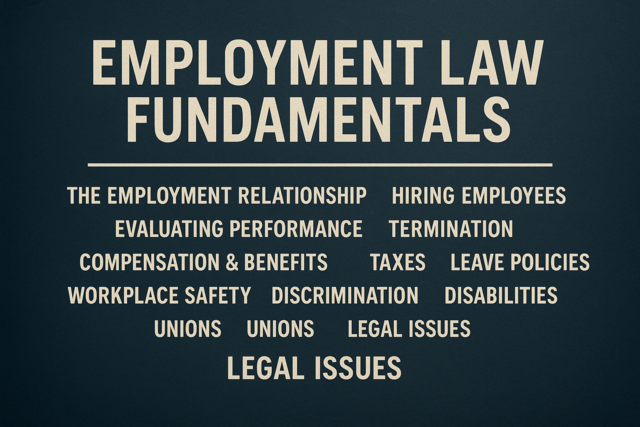After all the effort at defining a problem and coming up with apparently "brilliant" solutions, it all comes down to taking action. Does my company spend $XXX million to acquire a rival? Do we take our privately held company public at the end of this quarter, or do we wait two years for our business to grow further? Do I relocate to California or Florida or Connecticut for this job, or stay where I am? Do we move our family to Texas so our daughter can work with the skating coach who can get her to the Olympics?
Often people refer to such decisions as complicated or, even, as too complicated. This may lead to paralysis. And, of course, not making a decision is also a decision and has definite consequences. So, whatever the circumstances, individuals or organizations usually must choose to make the tough choices and deal with the results.
Common sense suggests that some system of comparing pluses and minuses is what is required to make any decision -- especially the tough ones. There are many ways to structure a plus and minus system, two of which will be covered here in detail.
The first is called "cost-benefit" analysis (CBA), which has been developed as part of the larger field of economics. The second is risk analysis that places intense focus on the consequences -- often emphasizing the negative consequences -- of a decision.
A) Cost-Benefit Analysis
Should a given American city build a new airport? Or a new convention center? Should China start building nuclear power plants to replace coal-fired ones? Should Head Start receive additional funding, or should those resources go toward reading programs in first and second grade? If trees filtering carbon dioxide out of the atmosphere help with the problems of climate change, should the international community invest in preserving the rain forest in South America? If so, how much money? These are typical of the questions where cost-benefit analysis would be useful. However, there is no problem, large or small, public, corporate, or personal, to which the basic principles of CBA could not be applied.
The expert economists who contributed to cost-benefit analysis (Cambridge University Press, 1994) described their concept of promoting benefits: "The basic notion is very simple. If we have to decide whether to do A or not, the rule is: Do A if the benefits exceed those of the next best alternative course of action, and not otherwise. If we apply this rule to all possible choices, we shall generate the largest possible benefits..." This covers the pluses side of the decision formula.
In economist language, costs (minuses) are determined as follows: "It seems quite natural to refer to the 'benefits of the next-best alternative to A' as the 'costs' of A. For if A is done, those alternative benefits are lost."
Thus, cost-benefit analysis is reduced to a simple formula: "So the rule becomes: Do A if its benefits exceed its costs, and not otherwise." In deciding energy policy and budget priorities, the Chinese government might use CBA to compare the benefits of building nuclear power plants with the costs of maintaining the current, mostly coal-fired energy system. After making the comparison, the political leaders of China would have good reasons to act on their decision.
Of course, making tough choices is much more complicated than any simple formula might suggest. As the Cambridge experts put it, "The problems arise over the measurement of benefits and costs ... it is fair to ask the objector what he means by saying that A is better than B, unless he has some means of comparing the various dimensions along which A and B differ." It often comes down to a comparing apples to oranges issue.
Thus, the experts have further complicated their formulation by considering four dimensions [italics added]:
1) The relative valuation of costs and benefits at the time when they occur
2) The relative valuation of costs and benefits occurring at various points in time: the problem of time preferences and the opportunity cost of capital
3) The valuation of risky outcomes
4) The valuation of costs and benefits accruing to people with different incomes
(This last item is specifically applicable to public policy and government investments.)
B) Effects on stakeholders, including individuals, groups, and for-profit and non-profit organizations: Item number four above does, however, serve as a link to consideration of particular impacts.
The Cambridge experts summarize the situation as follows: "There are some people who believe that one particular attribute of life, such as the silence of the countryside, is of absolute importance. For them, cost-benefit analysis is easy: The value of all other benefits and costs is negligible. More problematical are those people who believe in the absolute importance of two or more items, for they are doomed to intellectual and spiritual frustration. Whenever A is superior to its alternative on one count, and inferior on another, they will feel obliged to do both."
Such issues come up with any public project that involves the law of eminent domain trumping private property rights. Yes, the citizens want a new convention center for the economic benefit (jobs) it will bring to their community. But they are equally committed to preserving the historic buildings that may be torn down to make room for the construction. This situation is, indeed, "problematical." It represents the archetypal tough choice, putting the decision-maker between the proverbial rock and hard place.
In such a case, does perceived economic benefit override perceived quality of life? No formula will be able to reduce such a question to simple pluses and minuses.
The decision-maker is ultimately forced to choose a strategy, such as maximin or maximax, and use that as a means to decide. In this case, the maximin choice would be to preserve the neighborhood.The maximax choice would be to create as much economic activity, and as many jobs as possible. And the choice would be either authoritarian (made by the mayor), or a group decision, perhaps through a citizen referendum.
C) Risk Analysis is the final aspect of tough decision making. It is an advanced version of maximin -- avoiding negative consequences.
The Merriam-Webster online dictionary defines risk as "the possibility that something bad or unpleasant (such as an injury or a loss) will happen; someone or something that may cause something bad or unpleasant to happen; a person or thing that someone judges to be a good or bad choice for insurance, a loan, etc." and gives further examples as follows: "possibility of loss or injury: peril; someone or something that creates or suggests a hazard ... the chance that an investment (as a stock or commodity) will lose value."
Risk management has become an essential part of all decision making. The decision-maker wants to avoid the "bad or unpleasant" ("injury or loss"). He or she also wants to promote interactions that suggest "good risks," such as contacting a customer who will fulfill a contract or pay an invoice on time.
In one's personal life, voluntary risks are associated with dangerous or hazardous activities that one decides to undertake -- for example, driving a car, riding a motorcycle, climbing a ladder, smoking cigarettes, skydiving, white-water rafting, or even eating a third piece of pepperoni pizza with extra cheese.
Involuntary risks are negative impacts that happen to people without prior knowledge or agreement. Natural disasters, such as lightning strikes, wildfires, floods, tornadoes, hurricanes/typhoons, tsunamis, and earthquakes, are fundamental examples of involuntary risks, as would be exposure to environmental contaminants in the air, water, or soil.
In many situations, the obvious response to involuntary risks is risk management in the form of insurance. One insures one's personal or corporate assets against the possibility or probability of injury, damage, or loss. Fire insurance, (which would include damages caused by lightning or wildfires), is required as part of all home mortgage loans. Flood insurance is required in certain areas in designated flood plains. There is no decision to be made in such cases.
A small-business person, or a CEO of a large company, faces more complicated decisions regarding risks. One example concerns earthquake risk in California along the San Andreas Fault. A major earthquake will occur there. But when? And how damaging will it be?
Earthquake prediction is an area where little progress has been made, despite extensive research. Geophysicists know a great deal about the structure of the earth and the danger areas for major seismic activity. But they know almost nothing that will help predict when, where, and how severe the next big one will be.
So, companies in California have to make decisions. One result has been the location of branches of Silicon Valley corporations, such as Sun Microsystems and Oracle, in Colorado, where earthquake risks are close to zero. The expense of duplicating facilities, equipment, etc. in another state, away from the perceived risk, is deemed worth it to reduce potentially catastrophic losses.




























